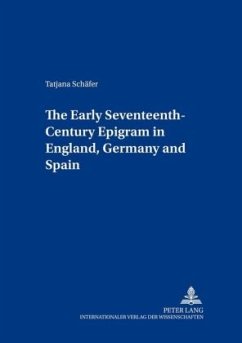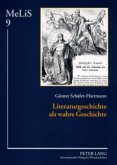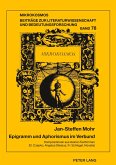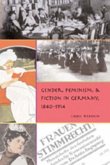This book is primarily a comparative study of three early seventeenth-century epigrammatists, Friedrich von Logau in Germany, Robert Herrick in England, and Conde de Villamediana in Spain. The first part of the study looks at the origins of the epigram in ancient tradition and shows how the early modern poets use the ancient models. The second part explores each poet in his own cultural and literary context. Friedrich von Logau is shown against the backdrop of the German Sprachgesellschaften, Conde de Villamediana's epigrams mirror his flamboyant lifestyle, and Robert Herrick uses the genre as part of his exploration of literary forms. This literary study thus expands into a cultural one of the three countries through their poets.
Bitte wählen Sie Ihr Anliegen aus.
Rechnungen
Retourenschein anfordern
Bestellstatus
Storno




